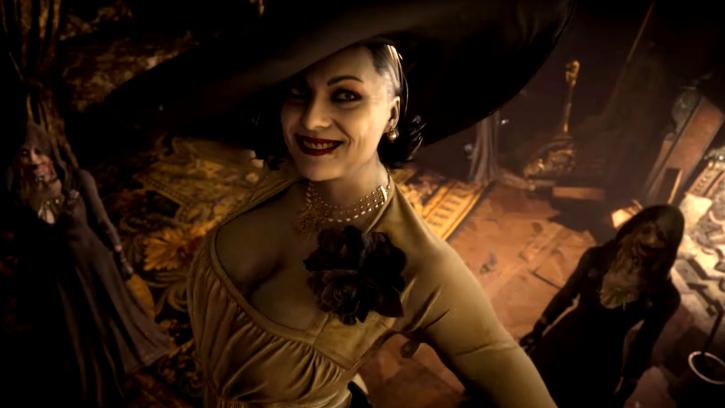Concluding
Concluding
The Resident Evil series always has been and still is a classic. It offers nice quality gaming with a good scare effect every now and then. However, the brilliance of the game is a combination of gameplay, aesthetics, and the immersion of the audio with your own heavy breathing, crackling fire, and squeaky sounding gates, for example, not just that visuals. You do get that feeling you're playing a part in a movie. The latest iteration does have AMD written all over it, and that shows. Performance, even at maximum quality settings, is well balanced; even the more mainstream graphics cards will perform radiantly with this tile. That said, you can see where that performance is originating from, as really it's a nice-looking game, but the scenery remains somewhat static with often blurry textures and visuals. It does fit the game, though, and yeah, I don't think I've seen trees and branches even move by wind (the cornfield in the recording did, though). Next to that, the single-player game, of course, is incredibly linear. I do like this game; I really do. So yes, the mainstream, cards can manage exceptionally well at Full HD, high-end cards WQHD and the beasts in Ultra HD. That said, there are many settings available that will increase your framerate; just peek at the AA and shadow options, for example. MAX perf settings will run well on most cards; however, 8GB of graphics memory here is a bit mandatory. For standard DX12 gaming, all was fine, but once we enabled Raytracing, the MAX setting in combo with DX12+Raytracing registered a drop-off in performance at Ultra HD for 8GB cards. By the way, it's was still playable, and you can easily tweak that out by lowering image quality settings a small notch.
At the best settings in Ultra HD, you'll need a card in the caliber of the Radeon RX 5600 XT or GeForce RTX 3060; both these cards aren't even remotely design for that resolution; that was nice to see as they will suffice perfectly. Aside from a random occasional ordinary stutter, the game is very playable and enjoyable. Frametimes for both sides reveal nothing, even slightly worrying. In fact, the frame pacing was exemplary, with no recorded frame drops or stutters in our 30 second time demo run. We test in-game, not scripted.
Concluding
Being an AMD title, it was no surprise to see the RX 6000 series dominate in DX12. Shortly before release, we received a Radeon Software Adrenalin build driver 21.10.01.17, which boosted performance. We presume to see these optimizations back on the May driver to be released anytime now. Also, we had access to an early yet near-final build of the game, provided through AMD, that we want to be transparent on. In DX12 gaming, the Radeon 6000 series has the upper hand in performance; the Achilles heel of the card series, however, is raytracing performance; it's considerably slower than where NVIDIA is with the RTX 3000 series. However, the good news is that the overall framerates are so high that for your gameplay experience, this won't be an issue. So in Raytracing, NVIDIA GeForce RTX 3000 series takes a handsome lead. And would this title ever get DLSS support, then AMD certainly would get their asses handed to them, as to this date, they do not offer similar technology. Realistically though, with these numbers, you don't really need it anyway.
Before we end this conclusion, some oddities we measure in-game, and no matter how precise we follow our 30-second path, results will never be 100% the same as opposed to a scripted scene. Take a little bit of an offset/margin in mind, please, as measuring in a building would give you high framerates; a fight would get you low framerates, outside normal framerates. We think we balanced in- and outside in our test run well enough, though, so we're confident that the FPS plots are comparable from a generic perspective. MAX quality mode is preferred and seems well balanced, and sure, either 2560x1440 resolution wise or something above that up-to Ultra HD, serves this game the best. That quality mode does like 8GB graphics cards, and with raytracing enabled ... 10GB+, it's almost like a match made in heaven (or hell if you go by game type) for AMD with the 12GB/16GB Raytracing compatible products.
Overall the game offers hours of enjoyable gameplay; there is little negative to mention aside from the fact you'll need to like the genre. The game, as so often is good, really, and the characters have a lot of detail. Resident Evil 8 will release on Friday, May 7th, two days from now.
- Download the latest NVIDIA GeForce drivers (download).
- Download the latest AMD Radeon graphics drivers (download).
- Sign up to receive a notification when we publish a new article
- Or go back to Guru3D's front page.


